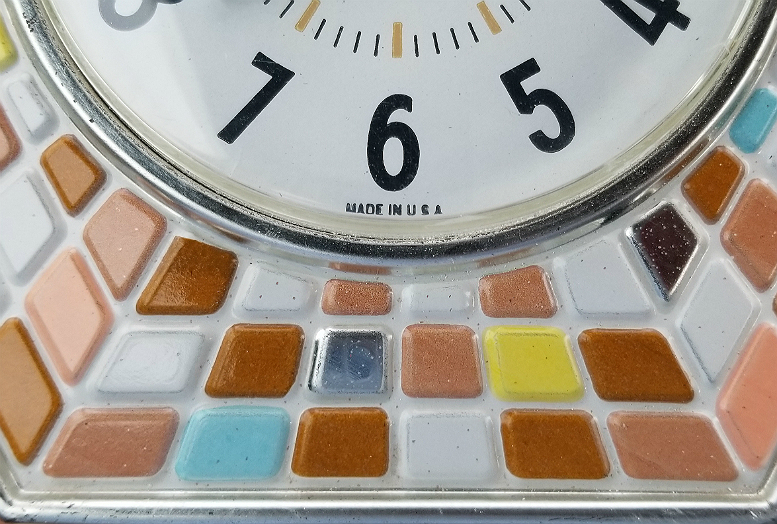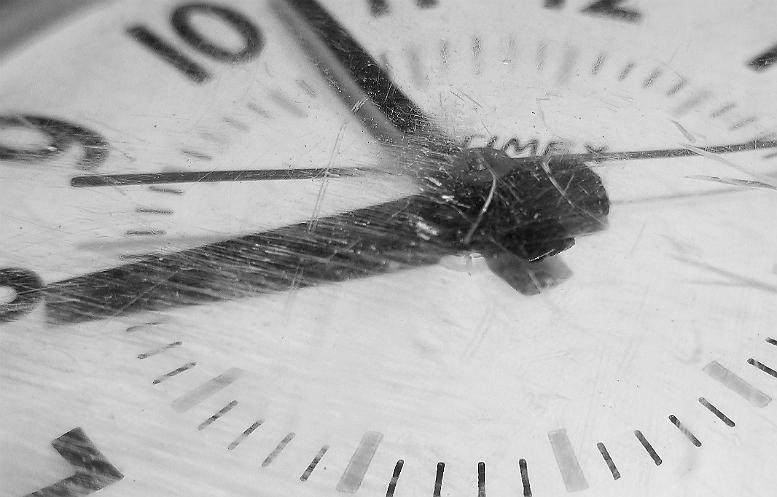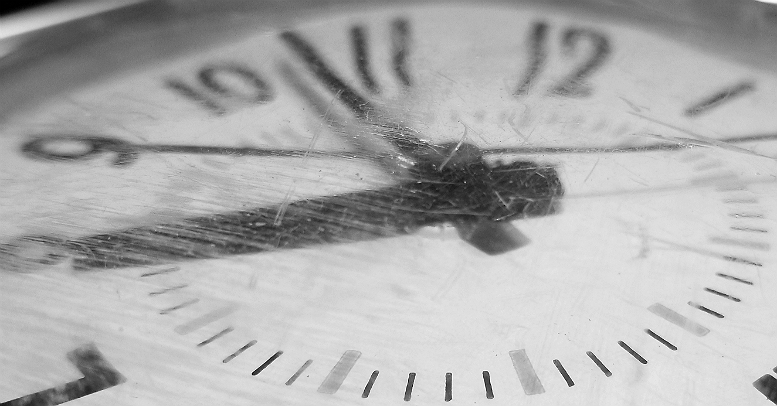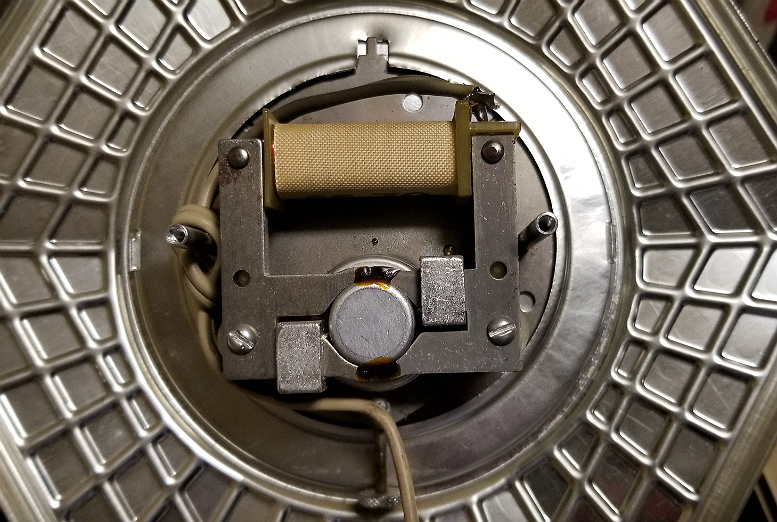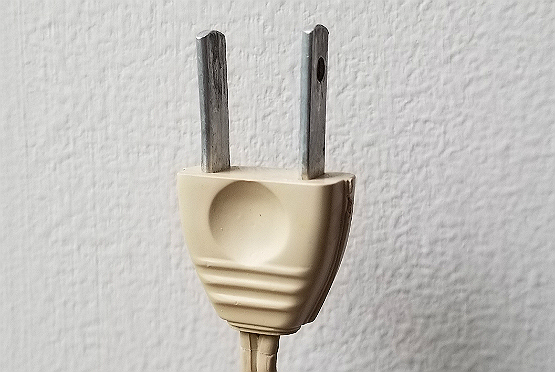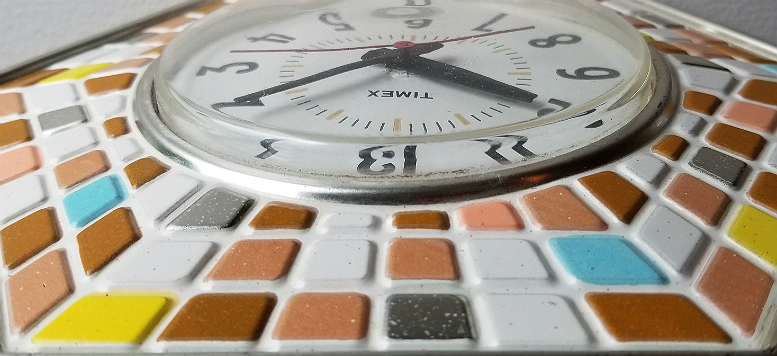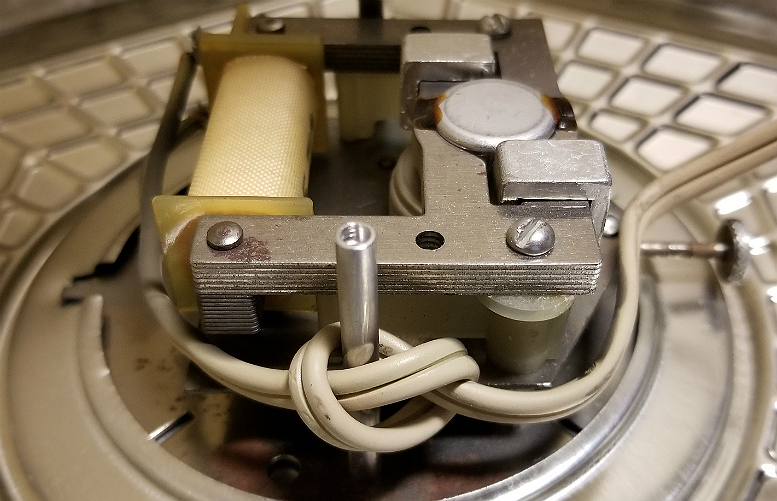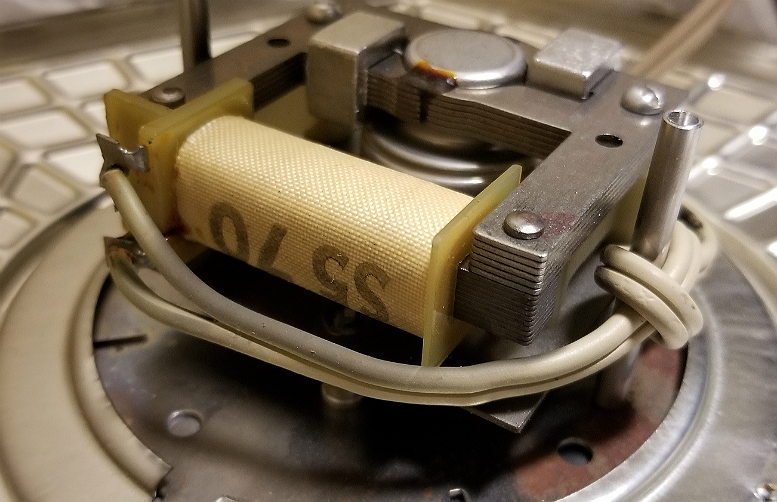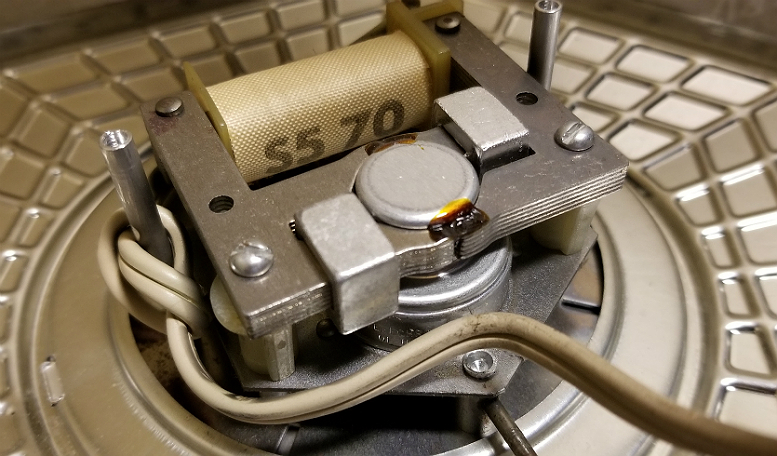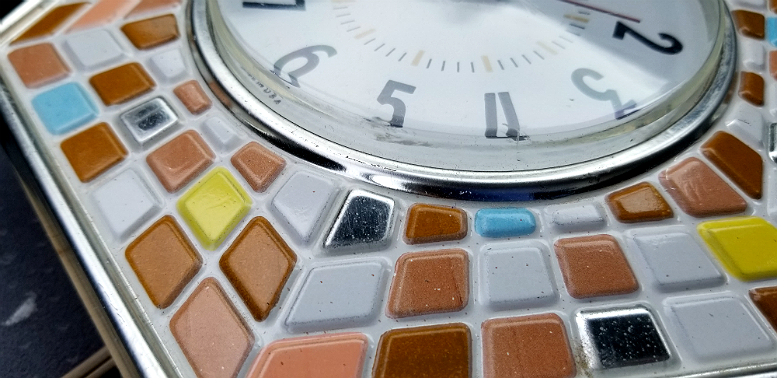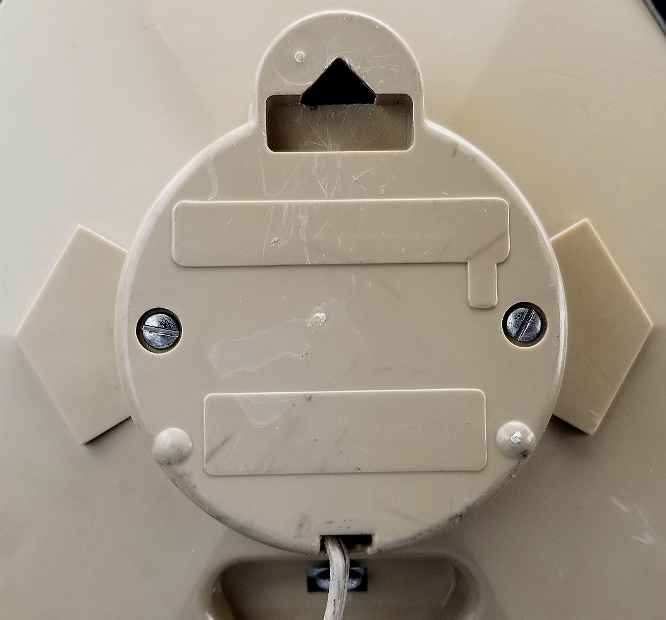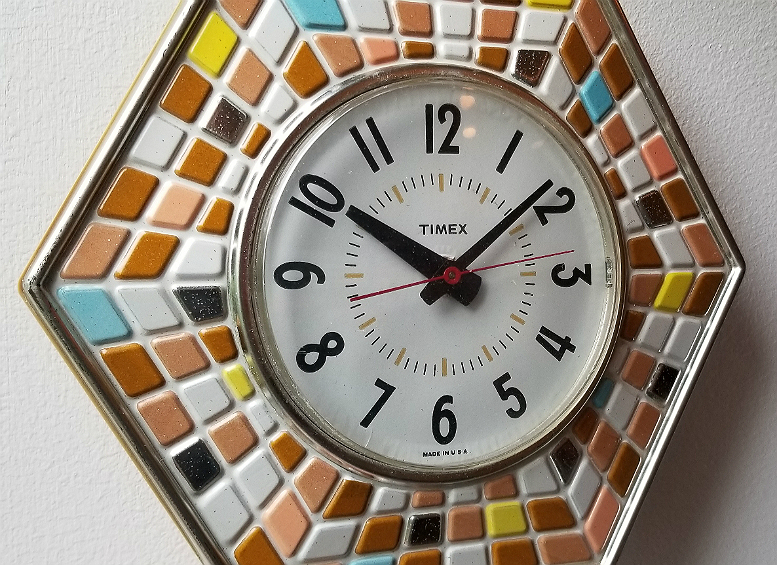Electric Timex Clock, 1950s or 1960s, Fake Tile, Hexagon
Here is a working electric clock that was probably made in the 1960s, but I don't know the exact date. Does anyone know this model? It is hexagon shaped, with round center dial, with an electric motor/movement. The decoration is meant to emulate the colored tile patterns popular at the time, but in reality are color applications against a single piece of molded metal. Why not, looks good, and probably less expensive than clocks with real tile (I'm almost sure more expensive models existed with real tile.) This is Alan. Contact info is below.
You can see on this mag view that these are not real tiles, with grout, but are raised parts of the metal which have been painted.
The watch was running perfectly fine when I obtained it, but look at the above and below pics, how badly scratched the crystal was! I'm not sure why. Wristwatches get tons of scratches from daily walk-around use but the lady who sold this said it was hanging in her kitchen "for years." How it got scratched up so badly is kind of a mystery to me. Anyway, with buffing compound (Maas Metal Polish) and a considerable amount of effort, I was able to take out the scratches, some of which were quite deep, and now the crystal looks very good.
Here is a view of behind, with the back of the clock removed. Here you can see that the front face is made of this single piece of molded metal, with the fake tile pattern. You can also see some of the movement and power cord. The distal end of the cord along with the plug were filthy, but cleaned up pretty well with a cloth.
/end
The cord has a kind of Modernist feel to it. Each side had this rounded depression, and three ridges, to provide some grip during removing the plug.
Angled view showing how clear the crystal became after all the buffing. Nice look again at the "tiles." There are tiles in white, mirror/silver, aqua blue, yellow, dark brown, lighter brown, and a kind of peach color.
Three views of the motor/movement. I don't know that much about electric clock movements, except that they are generally very accurate and keep time quite well.
The molded plastic back is held in by two screws. Typical peaked slot for hanging on a nail. The two slightly raised plates are where usually there should be stamped information about the clock, like the brand/company, model number(s), maybe even serial number, and often information on the voltage requirements. But for whatever reason, this caseback never got any of those stamps.
This is NOT the same clock, as you can pretty easily see. Not my clock, an internet photo. It's signed GENERAL ELECTRIC, and has slightly different "tile" colors. The brown/tan dominance of my TIMEX has been replaced by green tiles. But otherwise, this clock is *exactly* the same. The caseback, not pictured, was the same, except it had GE information and numbers stamped on the back. The hands are identical except for a red seconds on my TIMEX and grey seconds on the GE. The dial, aside from GE vs TIMEX signage, are identical.
It's virtually certain that these watches were made by the same company, and simply branded GE and TIMEX. It could be that GE made them both, selling TIMEX their "branded version." Or vice-versa. Or it could be that neither company made the clock, and both were supplied by a third-party maker.
Let's have a good look at the dial. Signed MADE IN USA, and TIMEX. Radial arrangement of the hours, which I think is a lot of fun. Black hour and minute hands, and red seconds hand. I really appreciate the extra-long opposite end of the seconds hand, which also appears very slightly thicker than the other end. Gives it a kind of elegance, I think. Finally, minute / second marks in black and beige.

